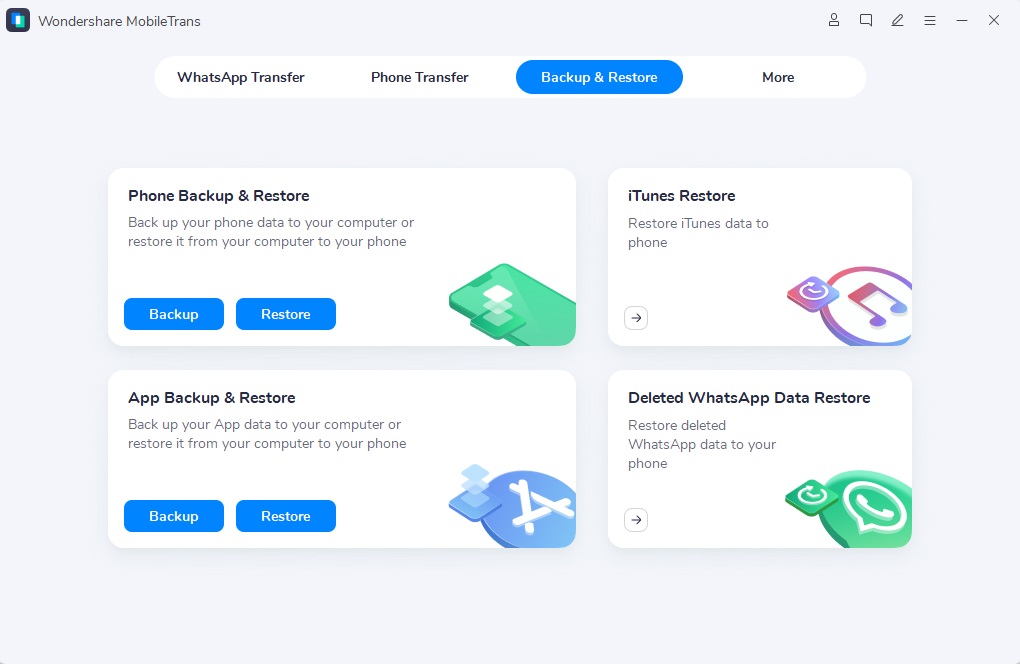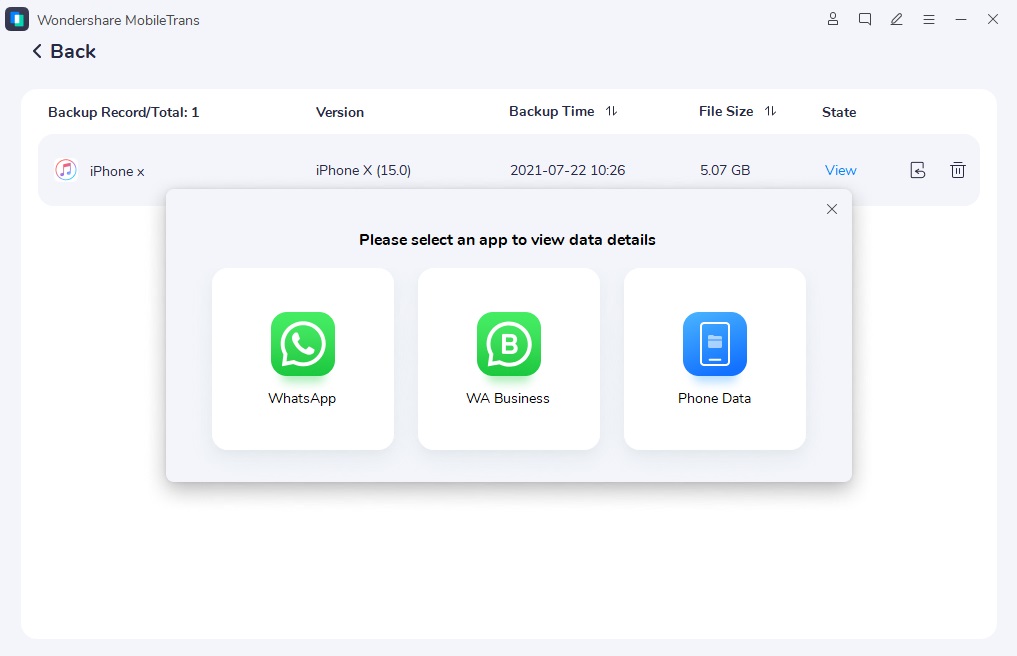What Does iTunes Backup Mean and Include? What You Need To Know

Written By Axel Nash |

You may have asked this question to your friends, peers, and fellows many times. In today's article, we will discuss everything you need to know about iTunes iPhone backup and how to know if your phone is backed up and where the iTunes backups are stored. This article will guide you from scratch and tell you what does backup iPhone means and how to backup iPhone to iTunes.
Part1: Why Do You Need iTunes Backup?
The most noticeable exclusion from the list of data backed up by iCloud is mobile applications. However, this is primarily for the benefit of quickness. When you recover from an iCloud Backup, all of your bought applications, audio, videos, and publications will be re-downloaded from the App, iTunes, and iBook stores.

The same cannot be true for music and films not purchased through iTunes, images not saved in the local photostream, call logs, lock screen configuration, and a slew of other information. You'll have to utilize the good ol' iTunes Backup to make backups of those.
If you have a lot of huge data or require connected copies, an iTunes backup is also the perfect idea.
Connect your iOS device to your Mac or PC, pick it in iTunes, and tick This Device under Periodically Backup to conduct an iTunes restoration.
Part2: What does an iTunes backup save?
If you wish to back up your iPhone with iTunes, you'll need to understand everything iTunes backup entails. Is there any text in it? You should be aware that an iTunes backup comprises the majority of your iPhone's current storage, including as images, texts, acquaintances, phone records, iPhone configurations, app personal folders, Passport data, and so on. Information that could be obtained from the host would not be included to save space and time. For instance, if you have 45 GB of data on your 64GB iPhone X, iTunes may provide a backup of around 10GB.
Part3: Where Do iTunes Store Backups?
Apple iTunes keeps backups on your PC or Mac's main disc by default and does not enable you to alter the default backup destination. When you attach your iPhone to iTunes and synchronize it, iTunes immediately backs up your data.
iTunes backups are kept in various locations depending on the operating system.
#1. Find my iTunes backups on Windows 10
Your iTunes backup files may be found in the MobileSync folder on Windows 10. You may also use the Search box in the Windows Start Menu to locate the backups.
- Step 1: Open the Start menu on Windows 10. A search bar is located next to the Start button.

- Step 2: If you downloaded iTunes from the Microsoft Store, type percent AppData percent or percent USERPROFILE percent in the Search window and hit Enter/Return.
- Step 3: Double-click the "Apple" folder in the Appdata folder, then "Apple Computer" and "MobileSync," then "Backup," where you'll discover all of your iTunes backups.
#2. Mac location for iTunes backups
Follow the instructions below to locate your backups on your Mac system.
- Step 1: To search the location, click the search bar (magnifier icon) in the Finder menu or use the combination command "Command + F" in the Finder window.

- Step 2: To go to the location, go to the "Go to Folder" menu option in the Finder menu.

- Step 3: Paste or enter the following directory location: ~/Library/Application\sSupport/MobileSync/Backup/
- Step 4: A mixed-up series of characters and digits will appear here, indicating all of your iPhone and other Apple devices downloads.
- Step 5: If you're using the newest macOS Avalon, you can also locate the files in iTunes (when you're using an earlier version of macOS than 10.15) or Finder (if you're using an earlier version of macOS than 10.15) or Finder (if you're using an older version of macOS than 10.15)
Go to iTunes and select Preferences from the drop-down menu. Click Devices in the options menu, right-click your device, and then press Reveal in Finder. This will display the backups linked with the iPhone in question.
Part4: How to Delete Old iTunes Backup?
MobileTrans is an amazing tool for backups and it is a very important tool when you want to use it for backing up data before deleting old iTunes backup. Both Windows and Mac operating systems are supported by MobileTrans. When needed, the program can back up a large number of files with a single swipe.
Method for backing up iOS devices to a PC with MobileTrans
- Step 1: Connect your iPhone or iPad to your PC.
The first step entails connecting any of your iOS devices to your computer. After you've opened the program, select the Backup & Restore module.
- Step 2: Choose the files you want to back up.
Go to Phone Backup & Restore and select Backup Phone Metadata. All of the authorized documents that you can securely store will be identified and treated. You must now select the data to be backed up before pressing the Start button.
Delete iTunes backup on Windows
If you wish to erase an iTunes backup on Windows, go to the location listed below.
In Windows 7, locate the Text box and push a button. If you're using the Windows 8 version of windows, click the magnifier in the top right corner. In Windows 10, on the other hand, immediately press the Search bar.
In the search bar, type percent USERPROFILE percent or percent downloads folder percent.
- Select the Return option from the drop-down menu.
- Select Apple Computer or Apple> MobileSync> Backup from the drop-down menu.
In comparison to the Mac operating system, deleting iTunes backups is quite simple in Windows. You may delete them either directly or by looking for an Application folder, which is described below.
Here’s how to erase an iTunes backup from your computer and view only downloaded iTunes.
- Select Edit> Preferences in iTunes on your PC.
- Select the backup files you wish to remove from the Devices tab.
- Confirm that you want to delete the backup.
Part5: How to Selectively Restore from iTunes Backup File?
Restore all iTunes data to your Phone with MobileTrans - Backup & Restore.
The MobileTrans program is compatible with both Windows and Mac operating systems.
- Step1: Go to MobileTrans's official website and click the Download option. The primary window will show you three modules, one of which is Restore.
- Step2: You must now connect the old iPhone to your new phone. Go to the iTunes backup file as soon as you open the Restore module.

- Step3: Continue to the next step to begin the restoration process.

- Step4: After you've selected the files you want to restore, press the Start button. The progress will then be displayed in a window. Allow it to finish.

Conclusion
In this comprehensive guide, we have discussed everything from how you can backup your iPhone to doing how to manually back up your iPhone and how to proceed with iTunes iPhone backup. If you still have any questions regarding the comprehension of iPhone backup settings, feel free to contact us in the comments section below.
New Trendings
Top Stories
All Categories








Axel Nash
staff Editor